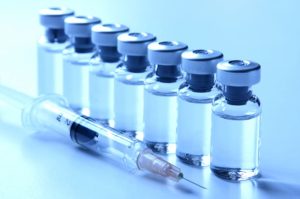4
Brooke Baker
Check ” there are no DNA vaccines available for human, those are only used in animals, and the COVID-19 vaccine is actually an mRNA vaccine that tells the body how to produce the virus fighting proteins.” Need to check…might be incorrect
Introduction
Now that our mental health has been acknowledged, the next step is to focus on how to bring an end to this pandemic. One key to ending this pandemic is to prevent the formation of hotspots in dense locations such as college campuses. On college campuses, the dense population and constant contact of students and
faculty in classrooms, dorms, and sporting events allows for the rapid spread of diseases faster than most other locations. To prevent a potential outbreak, precautions must be made to keep both students and
faculty safe, such as meeting immunization requirements or isolating a student if they contract a disease. Vaccines are our best defense against disease and are essential to preventing outbreaks from occurring on college campuses. In recent years, scientists have begun to pursue a new and potentially promising field of disease prevention, DNA vaccinations. DNA vaccinations utilize genetic engineering to fight off viruses and have the potential to completely revolutionize how we prevent disease. Genetic engineering is defined as “the deliberate modification of the characteristics of an organism by manipulating its genetic material”,
and it will affect the development of vaccines for many generations to come (Journal of Genetics and
Engineering, 2019). This type of serum uses DNA to produce antigens and generate the correct type of
genetic information needed to fight off these diseases. Genetic engineering has changed the development
of immunizations by cutting costs, improving efficacy, and creating a safer environment to test
their effectiveness.
Connection to STS Theory

This is connected to the Modernization Theory because as new
technology is created, more advancements in vaccines will greatly benefit society. The Modernization Theory is the theory used to
describe how society and technology synchronously evolve together in stages and create a more modernized world. Some people do not believe that this theory holds true, but this is evidently not the case. Now more than ever, the development of society has relied on the
improvements of technology, which together go hand-in-hand. The COVID vaccine is just one example that has a major impact on our
society. People are trusting scientists to pilot and manage the production of the vaccine in order to return to a “normal life.” The machinery used to create vaccines are advancing and creating a way for vaccinations to cost less but also perform better to eliminate the specific diseases they are made for. As these new mechanics evolve, the required vaccinations are established much quicker and, as a result, are released into society at a faster pace. As these medicines are distributed, these diseases will disappear at a greater rate and improve society’s health.
Cutting Costs

Improved technology has allowed future vaccines to cost much less than previous ones. The technology will make it to where no additional booster shots or high doses will be needed, decreasing the amount of injections society would have to purchase to fight off the infection. Also, adjuvants are beneficial in vaccines as they present the antigen to the immune system in an improved way so that there is a stronger immune response to the serum. Approved adjuvants in the U.S. are mineral salts such as calcium phosphate and alum, and these can be used in a
variety of vaccinations (McCullers and Dunn, 2008). This will reserve the number of supplies made and allow for more vaccinations to be produced at a decreased price than those in the past.
I live with a family member with underlying conditions and a vaccine is the only way I will get to be close with them again.This low development and market price allows a greater number of people to acquire the
medication, especially those who normally can not
afford medical care or insurance that will cover
the costs.
Improving Effectiveness
Before creating the vaccine, vaccinologists have to look at multiple different factors of the disease in
question as “a knowledge of immunobiology can aid in the identification of the type of protective immunity that should be elicited by the vaccine” (Ellis, 1999). This technique allows the vaccine to properly target a specific disease and permanently destroy it. Using DNA, genetic engineering will make it “possible to custom-design many vaccines for optimal efficacy and tolerability” (Ellis, 1999). This newer type of vaccine will be much more effective at preventing the disease by stimulating the immune system and helping make antibodies that fight off the disease. The DNA used will help promote immune responses and cellular
immunity to the specific virus (Flingai et al., 2013). Using genetic engineering to produce these new vaccines will make them be more efficient to target the disease and, overall, will be more successful in improving
society’s health.
Creating a Safer Environment

The testing of the virus vaccine has never been safer due to genetic engineering. These types of vaccines “involve injection of the plasmid into a patient to elicit an immune response to a protein that is
encoded on the plasmid” (Glenting and Wessels, 2005). Using the
specific DNA, the protein allows the vaccine to better target a certain disease and effectively eliminate it. The ingredients used to produce them reduces the spread of unwanted plasma and antibiotic-resistant genes to other parts of the body where they are not supposed to go (Senler, Blomberg, Smith, 2014). Uncontrolled expansion of the plasma and genes could cause the patient to become immune to the medication, making the vaccination useless.
Clemson’s Response: On-Campus Testing
Although Clemson University does not require students to be vaccinated in order to slow the spread of COVID-19 on campus, they have implemented other policies and infrastructure to create a safe environment. One of the most notable is the on-campus saliva testing center. Receiving nine million dollars from the state, a campus-testing center is able to run up to nine thousand saliva tests daily (Nicholson, 2020). As of the Spring 2021 semester, weekly testing is required for anyone entering on-campus buildings. This, along with other restrictions, has brought the University’s cumulative positive rate for the Spring 2021 semester to 0.9% (COVID-19 Dashboard, 2021).
Conclusion
As COVID-19 continues to spread throughout our society, the development of a vaccine continues to be
crucial in keeping college campuses safe for everyday life. While current efforts for a COVID-19 vaccine have not utilized genetic engineering, it continues to be a promising field for the development of future vaccines. DNA vaccines could be more cost-efficient, effective, and safer to test due to the increased safety standards for the modern technology related to vaccination machinery. These newer, more effective, vaccines could
allow greater production and distribution at a much lower cost, greatly improving society’s health. This would allow for increased distribution of vaccinations on college campuses with the goal of maintaining the safety of students and faculty.
References
COVID-19 Dashboard. (2021, April 15). Retrieved April 18, 2021, from https://www.clemson.edu/covid-19/testing/dashboard.html
Ellis, R. (1999, February 24). New technologies for making vaccines. Retrieved November 23, 2020, from https://www.sciencedirect.com/science/article/pii/S0264410X98004162?casa_token=N_id4LW_m5kAAAAA%3ANv2uT8Wrco_A8NR4mta8spPK3POmLhutkwn-P2eyh1e9oX6LdkWVD3zgGX1Qj9PHs-6z4Ii2KTo
Flingai, S., Czerwonko, M., Goodman, J., Kudchodkar, S., Muthumani, K., & Weiner, D. (2013, October 20). Synthetic DNA Vaccines: Improved Vaccine Potency by Electroporation and Co-Delivered Genetic
Adjuvants. Retrieved October 26, 2020, from https://www.frontiersin.org/articles/10.3389/fimmu.2013.00354/full
Glenting, J., & Wessels, S. (2005, September 06). Ensuring safety of dna vaccines. Retrieved April 23, 2021, from https://microbialcellfactories.biomedcentral.com/articles/10.1186/1475-2859-4-26
Journal of Genetics and Genetic Engineering. (n.d.). Retrieved April 23, 2021, from https://www.sryahwapublications.com/journal-of-genetics-and-genetic-engineering/aim-and-scope
McCullers, J., & Dunn, J. (2008, January). Advances in vaccine technology and their impact on managed care. Retrieved October 09, 2020, from https://www.ncbi.nlm.nih.gov/pmc/articles/PMC2730064/
Nicholson, Z. (2020, November 09). As campus Cases fall, Clemson seeks to widen COVID-19 testing to
surrounding communities. Retrieved April 18, 2021, from https://www.greenvilleonline.com/story/news/local/south-carolina/2020/11/09/clemson-university-saliva-lab-help-surrounding-sc-communities-test-covid-19/6051675002/
Stenler, S., Blomberg, P., & Smith, C. I. (2014). Safety and efficacy of DNA vaccines: plasmids minicircles.
Human vaccines & immunotherapeutics, 10(5), 1306–1308. https://doi.org/10.4161/hv.28077
Images
Image 1: This Photo by Unknown Author is licensed under CC BYNeeds to be completed citation
Image 2: This Photo by Unknown Author is licensed under CC BY-SA
Image 3: This Photo by Unknown Author is licensed under CC BY-SA-NC

